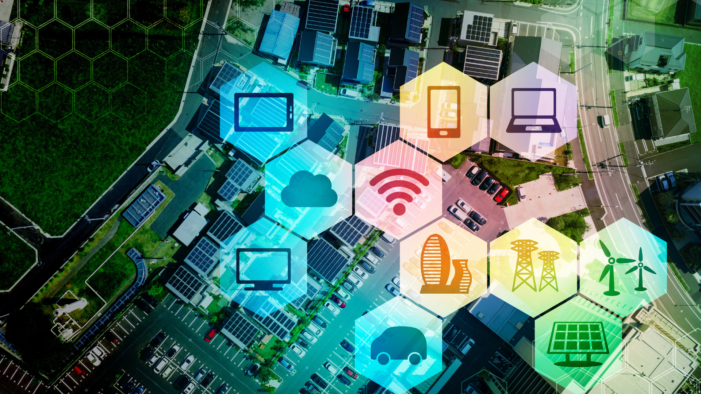ICTpost Telecom Bureau
RedCap (Reduced Capability) refers to a specialized feature in 5G networks designed to support devices with lower data rate and complexity requirements compared to standard 5G devices. It addresses the needs of applications that don’t require the high-speed, low-latency benefits of full 5G but still benefit from its connectivity. RedCap aims to enhance the 5G ecosystem by offering a more efficient and cost-effective solution for devices like IoT sensors and wearables, ensuring a wide range of applications can be served within the network.
Key Characteristics of RedCap Devices
RedCap devices are optimized for moderate data throughput, making them ideal for use cases such as IoT, wearables, and smart metering. These devices operate with simplified hardware, fewer antennas, and reduced power consumption, allowing for extended battery life and lower costs. This makes RedCap an attractive option for applications that need reliable connectivity but do not require the full capabilities of 5G, such as industrial IoT and connected health.
Difference Between RedCap and Standard 5G
Standard 5G is designed for high-performance use cases like enhanced mobile broadband (eMBB) and ultra-reliable low-latency communication (URLLC), which require high data rates, advanced modulation schemes, and massive MIMO (Multiple Input Multiple Output) technology. It operates across a wide range of spectrum bands, including sub-6 GHz and mmWave, providing the highest possible speeds and performance.
RedCap, by contrast, focuses on simplicity and efficiency. RedCap devices operate in narrower bandwidths, consume less power, and use simpler hardware, making them more affordable and energy-efficient. This approach is particularly beneficial for IoT devices that need long battery life and do not require high data rates. The reduced power consumption and lower complexity also help optimize network resources, making it easier for telecom operators to deploy 5G networks for low-demand devices.
Primary Use Cases for RedCap
RedCap is particularly suited for a variety of IoT applications where advanced 5G capabilities are unnecessary. Common use cases include:
Wearables: Devices like smartwatches and fitness trackers that transmit health and fitness data require moderate data rates and long battery life. RedCap offers an ideal solution by providing energy-efficient, cost-effective connectivity.
Augmented and Virtual Reality: AR and VR glasses can benefit from RedCap’s efficient real-time data exchange, even without the high-speed capabilities of full 5G.
Factory Automation and Asset Tracking: In industrial settings, RedCap enables reliable, energy-efficient connectivity for sensors and actuators in factory automation, as well as real-time asset tracking in warehouses and logistics.
Energy Efficiency and Green Telecom
One of the key advantages of RedCap is its energy efficiency, which directly supports global sustainability goals. RedCap devices consume significantly less power, leading to longer battery life for IoT devices and wearables. This is crucial for applications where devices need to operate for years on a single battery charge, aligning with efforts to create greener telecom networks.
RedCap’s Role in Expanding 5G Accessibility
RedCap technology helps expand 5G accessibility by offering a cost-effective solution for a wide range of industries and applications. This includes rural and remote areas, where full-fledged 5G may not be necessary but reliable connectivity is essential. In agriculture, for instance, RedCap can power sensors that monitor soil conditions, weather, and crop health, helping improve yields and reduce resource use.
Status of RedCap in India
In India, RedCap is still in the early stages of adoption. As telecom operators focus on expanding 5G coverage, RedCap is expected to play a larger role as the technology matures. In the future, it will likely support the deployment of a vast number of IoT devices, particularly in sectors like fixed wireless access (FWA), smart cities, and industrial automation.

Digital Inclusion and Smart Cities
RedCap can play a pivotal role in bridging the digital divide by making 5G more affordable and accessible, particularly in rural areas. Its low-cost, energy-efficient connectivity enables a wide range of services, empowering communities with better access to information, healthcare, and education. Smart cities, which rely on connected devices like traffic lights, environmental sensors, and security cameras, can also benefit from RedCap. By offering a balance between cost, performance, and energy consumption, RedCap allows for cost-effective implementation of smart city solutions on a large scale.
RedCap is a vital component of the 5G ecosystem, offering a simplified, efficient solution for applications that don’t require the full capabilities of standard 5G. Its focus on reducing complexity, power consumption, and costs makes it an ideal choice for IoT devices and other low-demand applications. As 5G continues to evolve, RedCap will play a critical role in expanding the reach of 5G, promoting digital inclusion, and fostering innovation across various industries.
(editor@ictpost.com)








